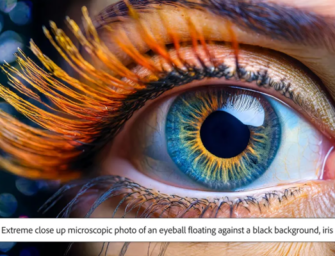Google Assistant Upgrades Action Developer Tools to Streamline Building and Running Voice Apps
 Google announced upgrades to the Google Assistant runtime engine on Wednesday designed to improve the speed and performance of voice apps. The tech giant revealed the improvements along with a handful of new and updated tools aimed at simplifying the process of building Google Assistant Actions.
Google announced upgrades to the Google Assistant runtime engine on Wednesday designed to improve the speed and performance of voice apps. The tech giant revealed the improvements along with a handful of new and updated tools aimed at simplifying the process of building Google Assistant Actions.
Call to Action
The new Actions Builder feature sets up a central hub in the Actions console for developing and testing a new Google Assistant Action, showing visually how the AI responds to different conversational prompts and making it easier to train and debug the app. The idea is that the developer won’t have to keep going back from the console to the Dialogflow natural language understanding platform. All of the tools are in the console, making the whole process more efficient.
Google also updated the Actions SDK to assist with boosting that efficiency. The SDK puts every element of the voice app into files that a developer can export wherever they wish. That means the developer could build the voice app without needing to use the cloud, while still enabling them to move training data around. Using the files with Google’s improved command-line interface (CLI) also allows the developer to skip using any interface at all and just write and edit the app with code.
“Great experiences are at the core of what makes Google Assistant truly helpful,” Google Assistant director of product management Payam Shodjai explained in a blog post. “To help existing and aspiring developers build new experiences with ease, we are making some major improvements to our core platform and development tools.”
Runtime Run
Google is also introducing a kind of shortcut to make its voice assistant respond more quickly and naturally called Continuous Match Mode. When incorporated by a developer into their app, Google Assistant can instantly respond by spotting previously specified terms. In case a user is worried about having the microphone on for longer, the voice assistant announced when it is doing so, and there’s a limit to how long developers can make their apps keep the microphone on.
“Sometimes you want to build experiences that enable users to speak more naturally with your action, without waiting for a change in mic states,” Shodjai said. “Continuous Match Mode allows Assistant to respond immediately to a user’s speech for more fluid experiences by recognizing defined words and phrases set by you. This is done transparently so that before the mic opens, Assistant will announce the mic will stay open temporarily so users know they can speak freely without waiting for additional prompts.”
Underlying the improved developer tools is an upgraded Google Assistant runtime engine. The engine is the core of how Google Assistant understands and responds to people, so bettering its operations makes everything built on it improve as well. In its announcement, Google said the engine runs faster and more smoothly than previously. It’s also more accurate in parsing what users are saying even with not as much data with which to work. In other words, building a conversational voice app won’t need the same size dataset to perform at an acceptable level as it would have previously.
“Google Assistant helps more than 500 million people every month in over 30 languages across 90 countries get things done at home and on the go,” Shodjai said. “What’s at the heart of this growth is the simple insight that people want a more natural way to get what they need. That’s why we’ve invested heavily in making sure Google Assistant works seamlessly across devices and services and offers quick and accurate help.”
Follow @voicebotai Follow @erichschwartz
Google Assistant Brings Voice Match to All Compatible Devices, Opens Up Default Speaker Choices
New Google Assistant App Helps Parents Read to Kids From Far Away








